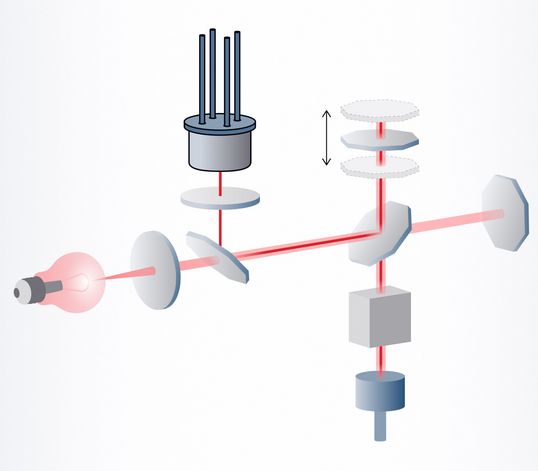VCSEL arrays are used in various production, manufacturing and automation environments, including smart sensors such as pressure sensors, temperature sensors and Industry 4.0 solutions. They are available as highly efficient, easy-to-install solutions in hermetically sealed TO housing and are also suitable for harsh environments. In the industrial sensor market, VCSELs are also advancing various other types of sensors and 3D sensors. These include level sensors, gas sensors, image sensors, flow sensors, position sensors, distance sensors, humidity sensors and automation sensors. Many other sensors used in high-tech applications such as 3D imaging, industrial robot components, surveillance or predictive maintenance also benefit from VCSEL sensor technology.
Modern VCSEL technology for industrial sensors in demanding environments
Why use VCSEL lasers for industrial sensors?
VCSEL lasers are reliable and high-performance light sources for industrial sensor applications. Single-mode VCSELs in TO housing are perfect for demanding industrial environments. They are versatile, inexpensive and easy to integrate into manufacturing processes.
VCSELs are available in hermetically sealed TO housing. They are extremely resistant to damage, even in the most demanding industrial production environments.
VCSELs in TO housing are also available with an integrated TEC and thermistor for precise control of the laser temperature.
Versatile industrial sensor solutions with wavelengths from 760 nm to 940 nm are available for a variety of application requirements.
The single-mode VCSEL platform is designed for extremely low power consumption and high output power.
Contact us!
Our industrial sensor experts at TRUMPF are there for you. We look forward to discussing your specific requirements.
Where is VCSEL technology used for industrial sensor solutions?
Industrial sensor technology offers a variety of application fields for non-contact laser measurement technology, such as oxygen measurement, industrial encoders, atomic clocks, speed, depth and distance measurement as well as proximity measurement in various types of machines.

Optical sensors can use VCSEL technology to measure particles in the environment. Single-mode VCSELs are excellent for TDLAS applications (Tunable Diode Laser Absorption Spectroscopy). The narrow line width and precise control with TEC make the single-mode VCSEL a good choice for TDLAS systems. Areas of application include monitoring, control and pressure measurement in various industrial environments such as the chemical and pharmaceutical industries.

FTIR, or Fourier transform infrared spectroscopy, offers fast optical infrared measurements with good signal quality. Temperature-stabilised single-mode VCSELs are well-suited for FITR since they exhibit a low temperature dependence of the emission wavelength (0.06 nm/K). In addition, the typical narrow-band spectral emission of 100 MHz supports the requirements of FTIR applications.

Optical encoders require high-precision signals and reliability under demanding operating conditions. Single-mode, polarisation-locked VCSEL solutions are the right components for this task because of their Gaussian beam profile, low power input, long coherence length, and excellent reliability.

A variety of industrial processes use speed and distance measurement for precise and reliable non-contact measurement of objects. These include cut length measurement, speed control in roll-to-roll processes or in printing (textiles, non-wovens, etc.). Self-mixing interference (SMI) VCSELs are perfectly suited for this. In VCSELs with integrated photodiodes (ViP), the photodiode measures the interference of the light signal and the system calculates the speed of the movement based on the frequency difference. The sensor directly detects the speed and direction, and indirectly detects the position and expansion of the part.

Small particles with sizes between 0.5 and 10 µm can be detected with high precision in real time using VCSEL-based sensors. The small laser diodes are easy to integrate into modules and systems and are maintenance-free. Dirt or sunlight are not problematic for the VCSEL sensors, and VCSEL-based solutions can be used both indoors and outdoors.
VCSELs with integrated photodiodes (ViP) enable the self-mixing inference (SMI) measurement method, so that the sensor is the light source and can simultaneously also further process reflected light.






